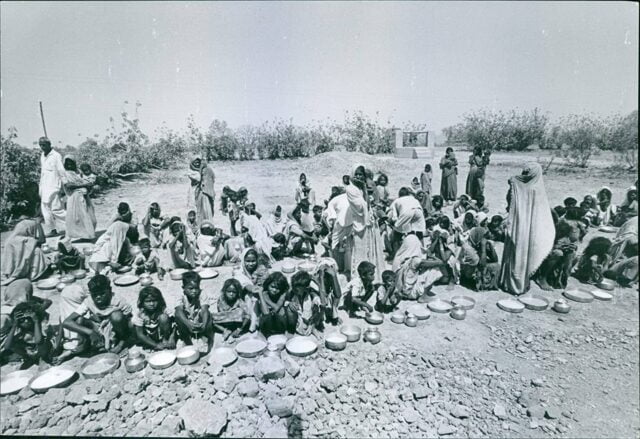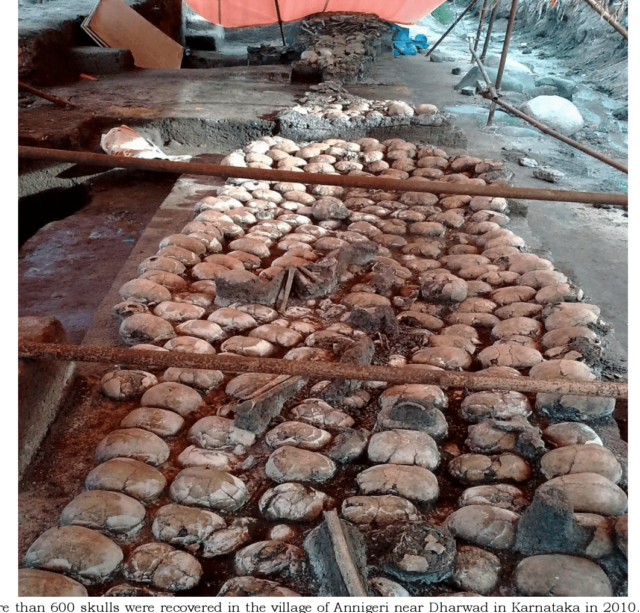Indian history textbooks have most certainly focused only on major narratives that have come to define our national identity.
We have only learned of the glories of different empires, be it the Mughals or the Rajputs or the British, and the nationalistic movements that were fought against the British Raj under popular leaders such as Mahatma Gandhi.
However, we always tend to forget the narratives of those who suffered due to the failures of societal structures and the British colonisation.

India has been a victim of a lot of famines in the past, and most of those haven’t been given much attention in our national consciousness. The Great Bengal Famine of 1943 has been the worst one ever experienced by the human race across the world, which was also never taught in school.
The Skull Famine or the Doji Bara famine is one such historical event that lasted between 1791 and 1792, causing widespread mortality in places such as Hyderabad, Southern Maratha Kingdom, Deccan, Gujarat and parts of the Madras Presidency.
It seems as though our education system does not like acknowledging failures.
What Were The Reasons For The Famine?
According to the meteorological observations made by William Roxburgh, a British surgeon of the East India Company, the El Nino was the reason why the South Asian monsoon failed for four consecutive years since 1789.
This caused the failure of crops, leading to a long period of drought. It was also compounded by outbreaks of cholera and smallpox.
In a study published by a scholar named Richard H. Grove, around 11 million people died due to the famine, either from starvation or after suffering from an endemic disease.
Read More: Imperialist Britain Hid And Burnt Documents With Orders Of Brutality On Colonies
The enduring effect of the famine was largely felt on the economic system. In Poona (present-day Pune), which was part of the Bombay presidency, the prices of grains increased and the rupee price of rice stood at around 8 pounds! In the Dharwar region, it went up to 6 pounds.

British Raj And The Famine
The famine also had a historical affect on Indian relations with colonisation, as it coincided with the downfall of the Maratha Empire. Although the second Anglo-Maratha war was fought in 1802, since the Doji Bara famine had an impact on the economy of the country, it also affected how the war turned out.
The Peshwa of the time, Baji Rao II, fled to British protection to curb the invasion of the Holkars, a Maratha clan. However, he ended up signing a treaty with the British, called the Treaty of Bassein, which handed all the power to the British.
After the Maratha victory of the first Anglo-Maratha war in 1782, the famine had taken a toll on the artillery capacity and the strength of the Maratha army.
There were other factors such as the Mughal exploits, but the famine became precedent for the total control of the Indian subcontinent by the British.
Why Is It Called The Skull Famine?
There is no historical evidence to explain why the famine got that name, however, skulls were unearthed in Annigeri, Gadag district of Karnataka in 2011. These skulls were found in a neat arrangement, and archaeologists speculated that they were part of a mass burial.

The State Department of Archaeology confirmed later that the skulls belonged to the victims of the “Skull Famine.” The bodies were either buried or scavenged by vultures.
At the time, many other people went on to migrate to different places. The villagers then returned to these places and eventually buried the dead people.
It is a sad story, but crucial enough to become part of our cultural and historical memory.
Image Credits: Google Images
Sources: Sage Journals, Times of India, Deccan Herald
Find the blogger: @aiswaryanil
This post is tagged under: famines, indian famines, how many famines has india faced, the skull famine, what is the skull famine, doji bara famine, annigeri excavations, indian archaeology, the great bengal famine, what famines did india face under british rule, anglo-maratha wars, baji rao, holokars, treaty of bassein, indian nationalims, indian history
































[…] edtimes […]
[…] edtimes […]